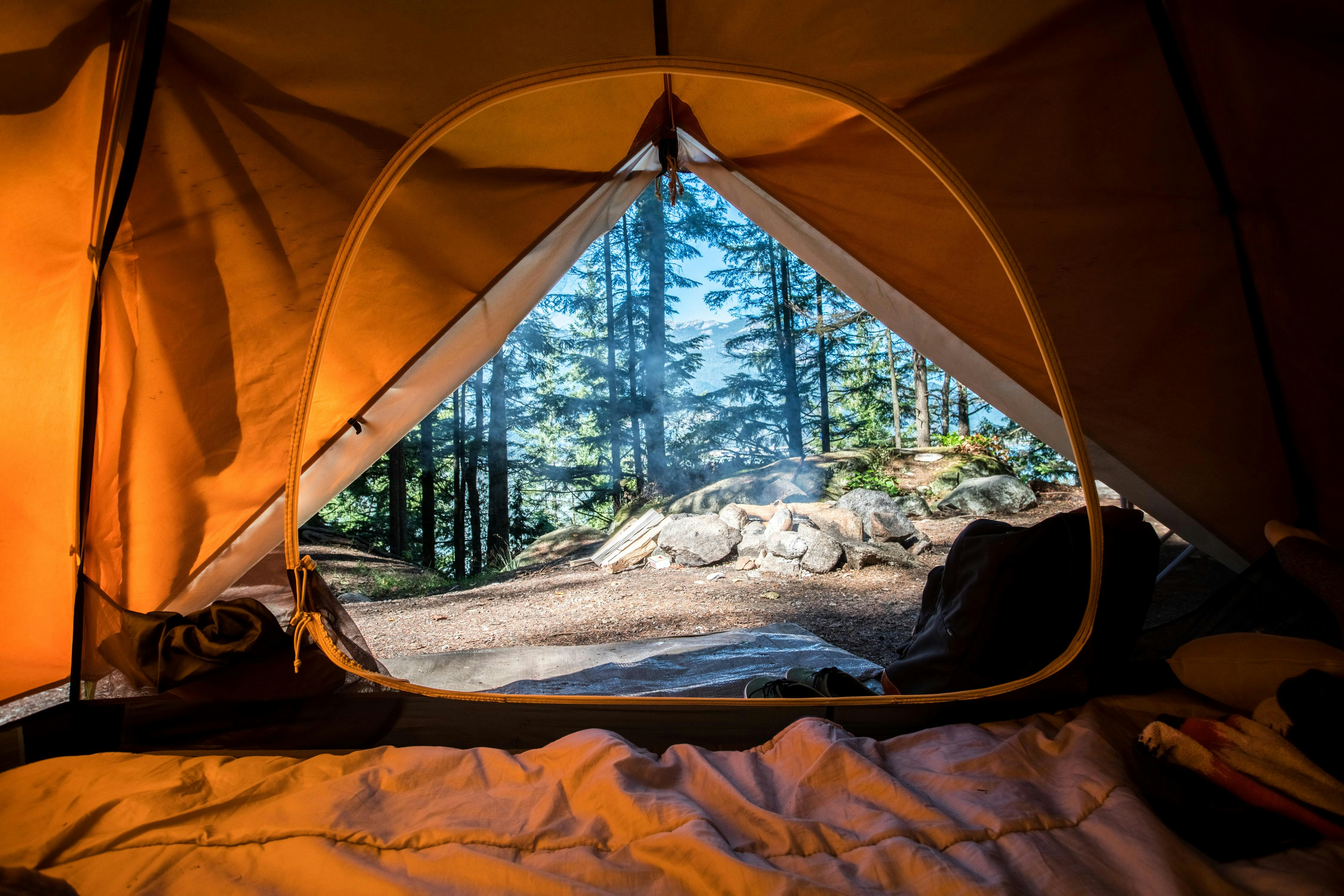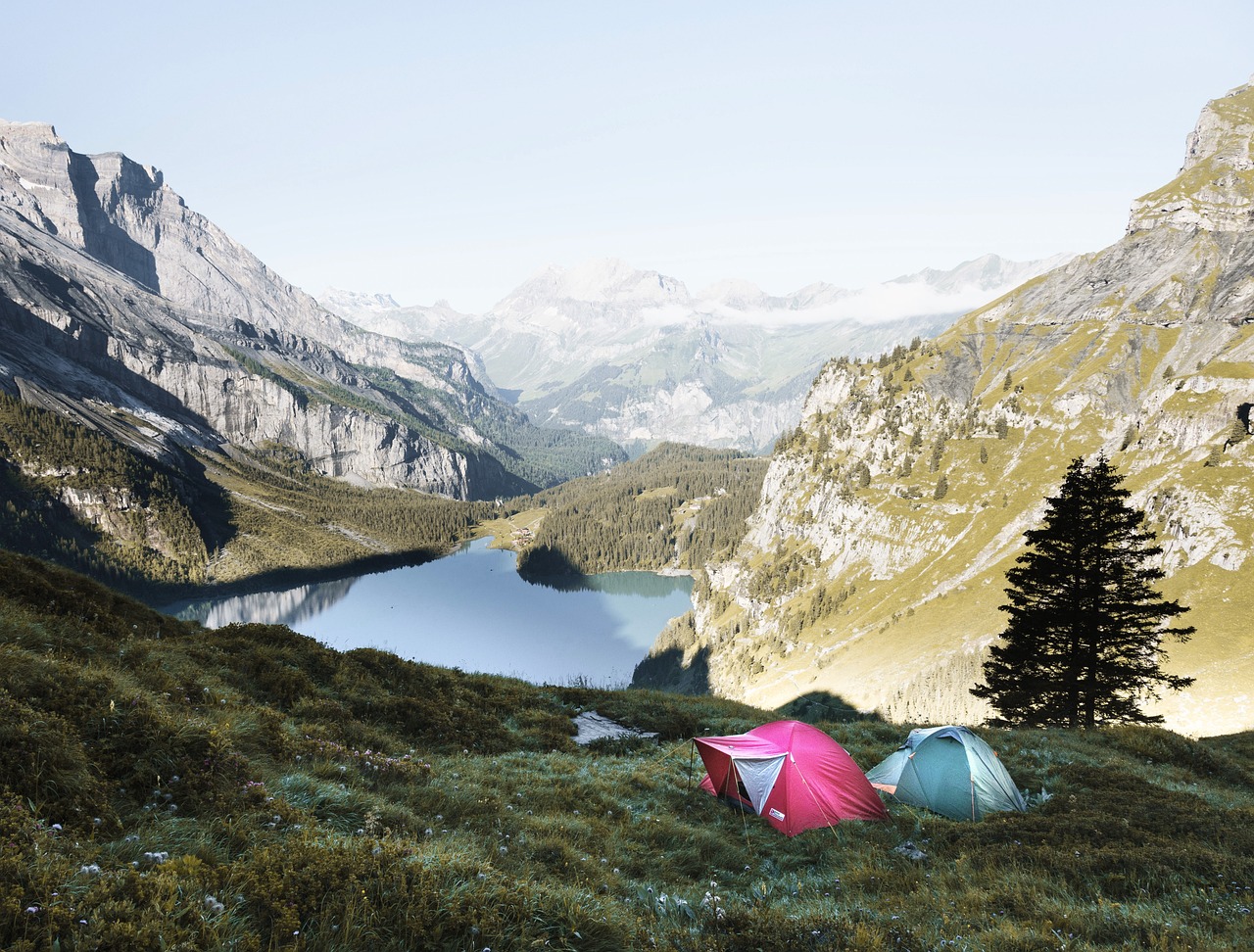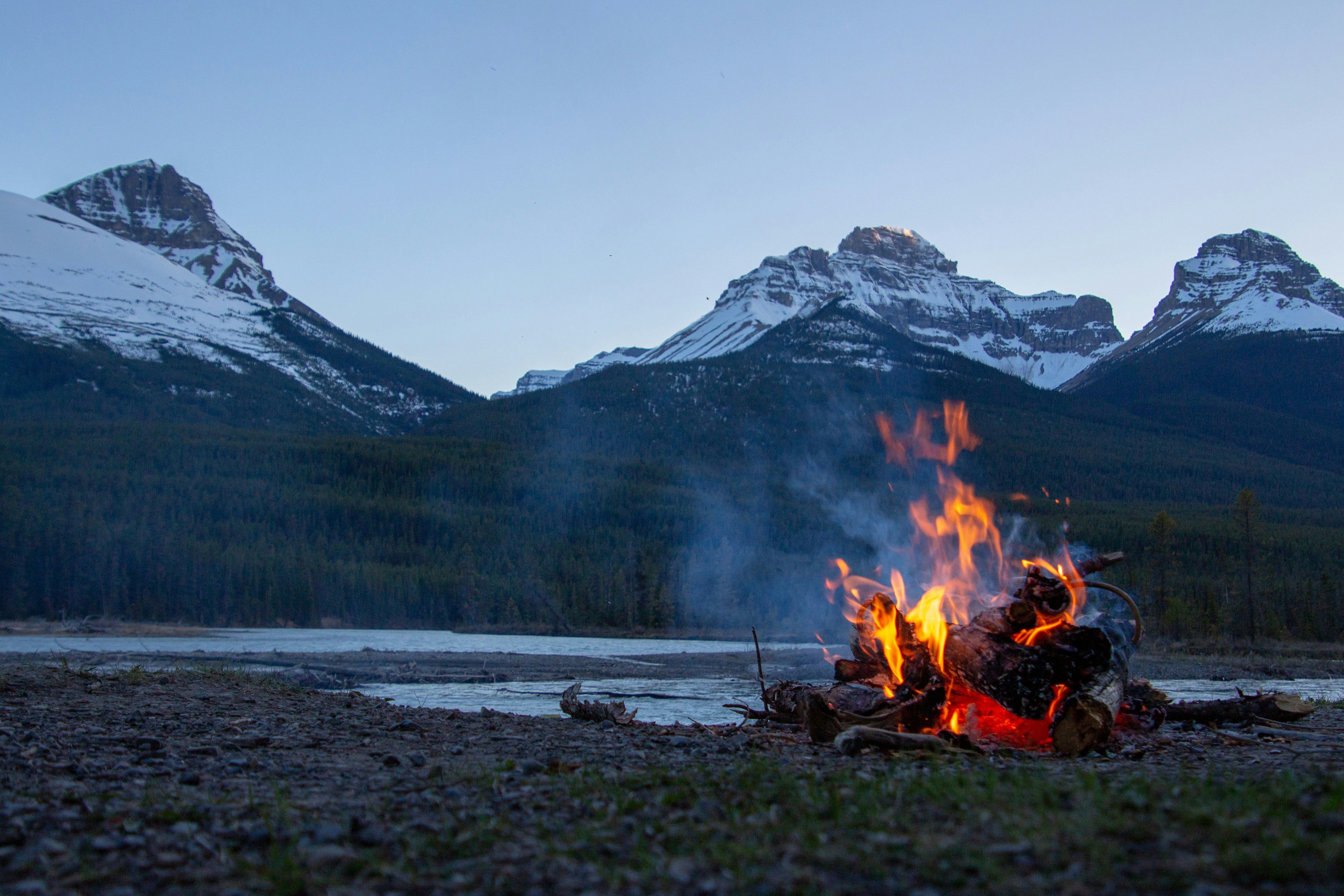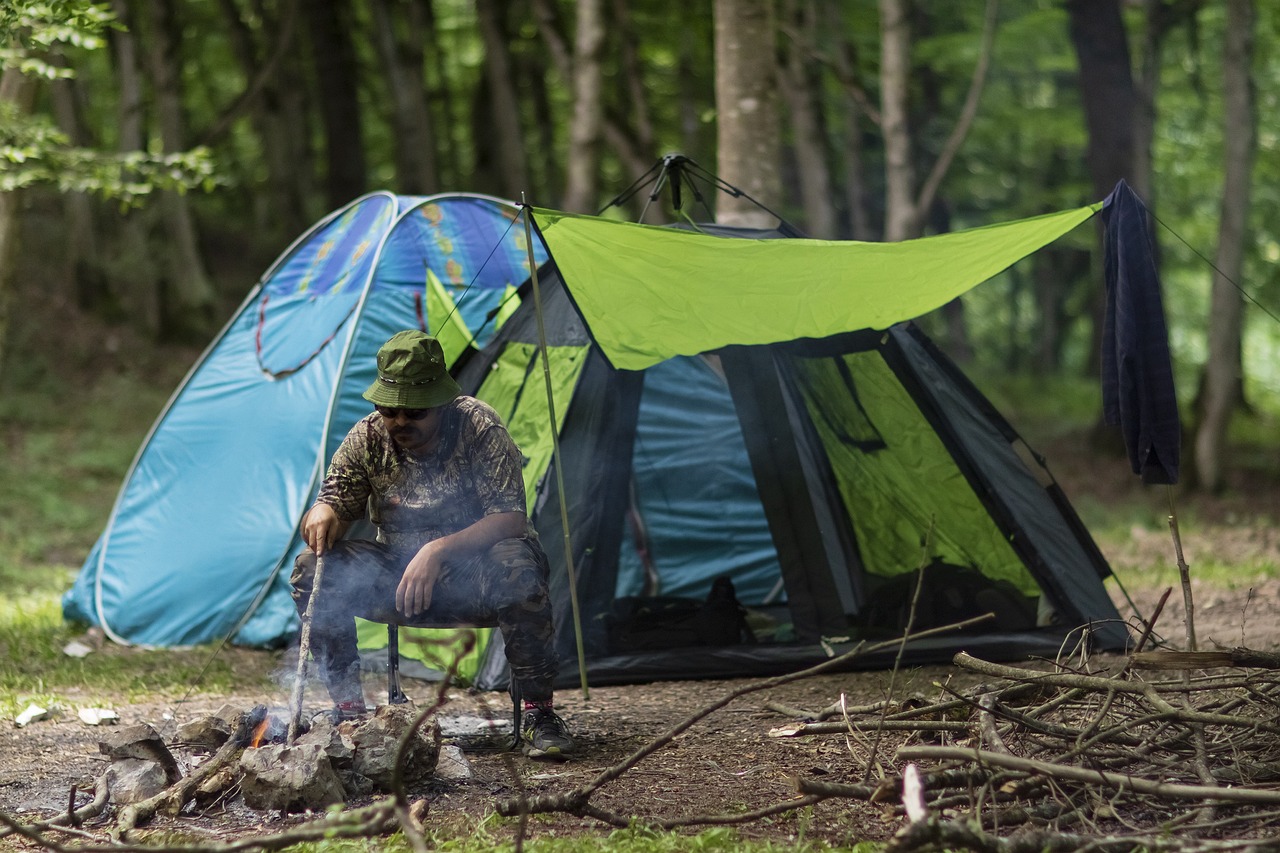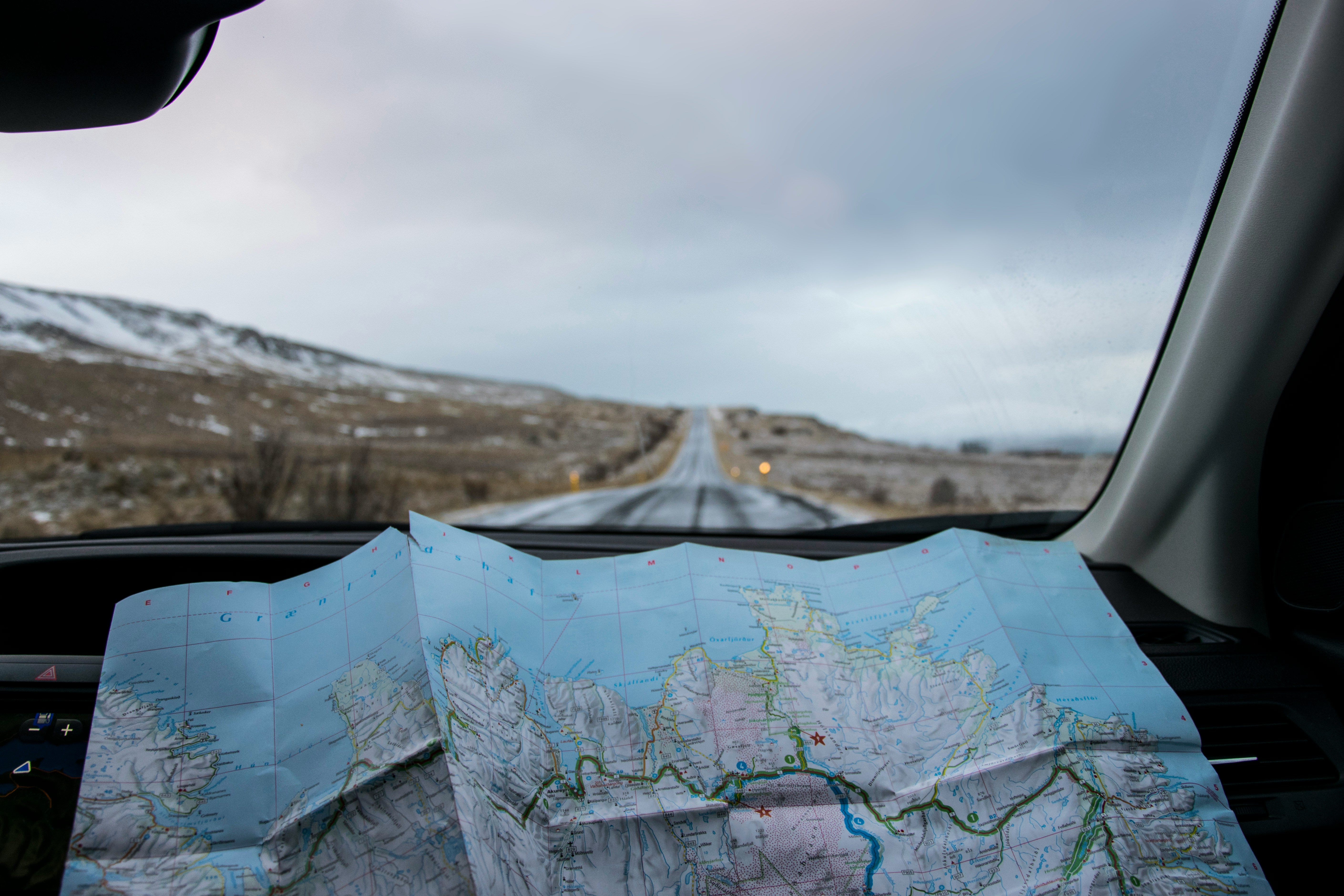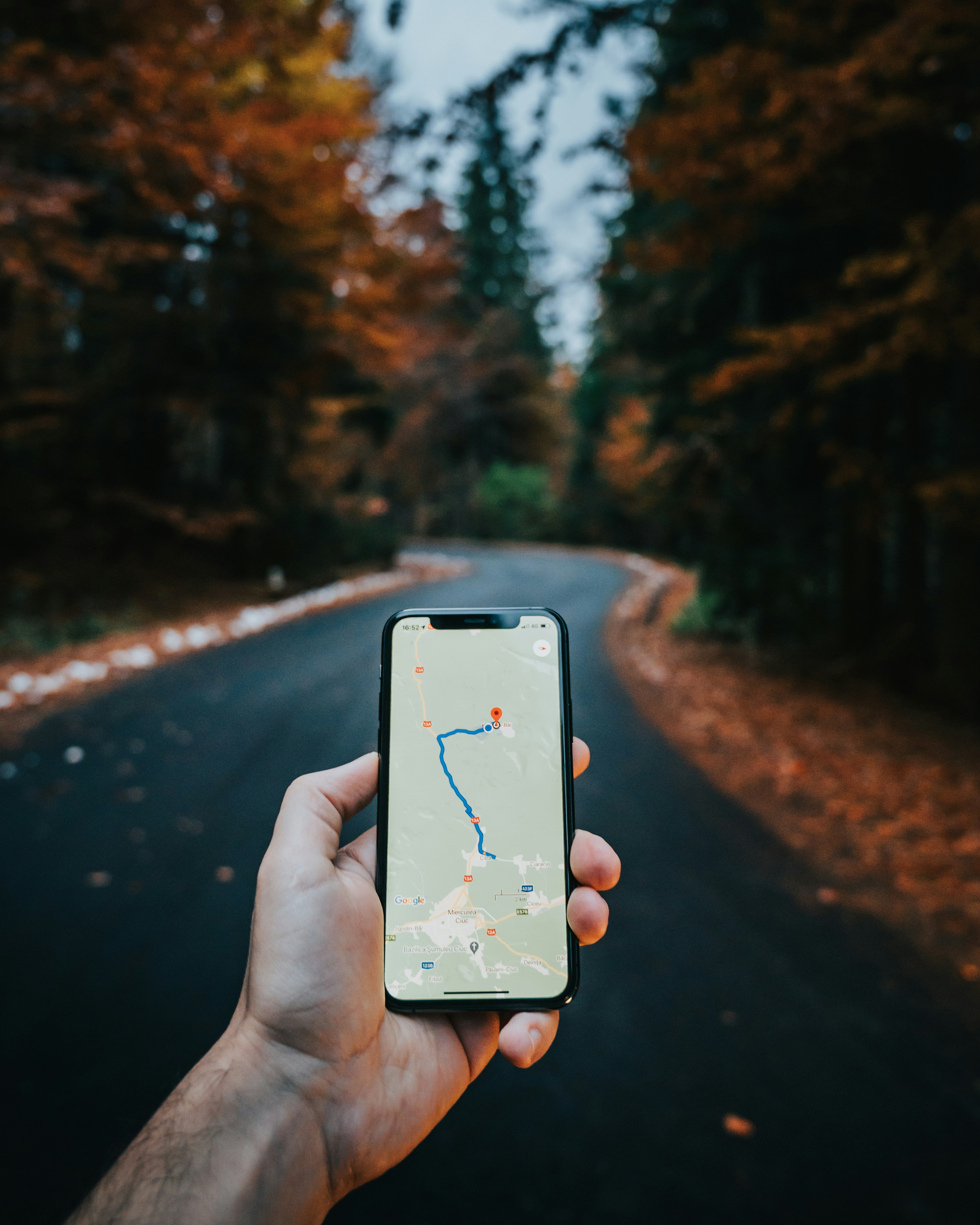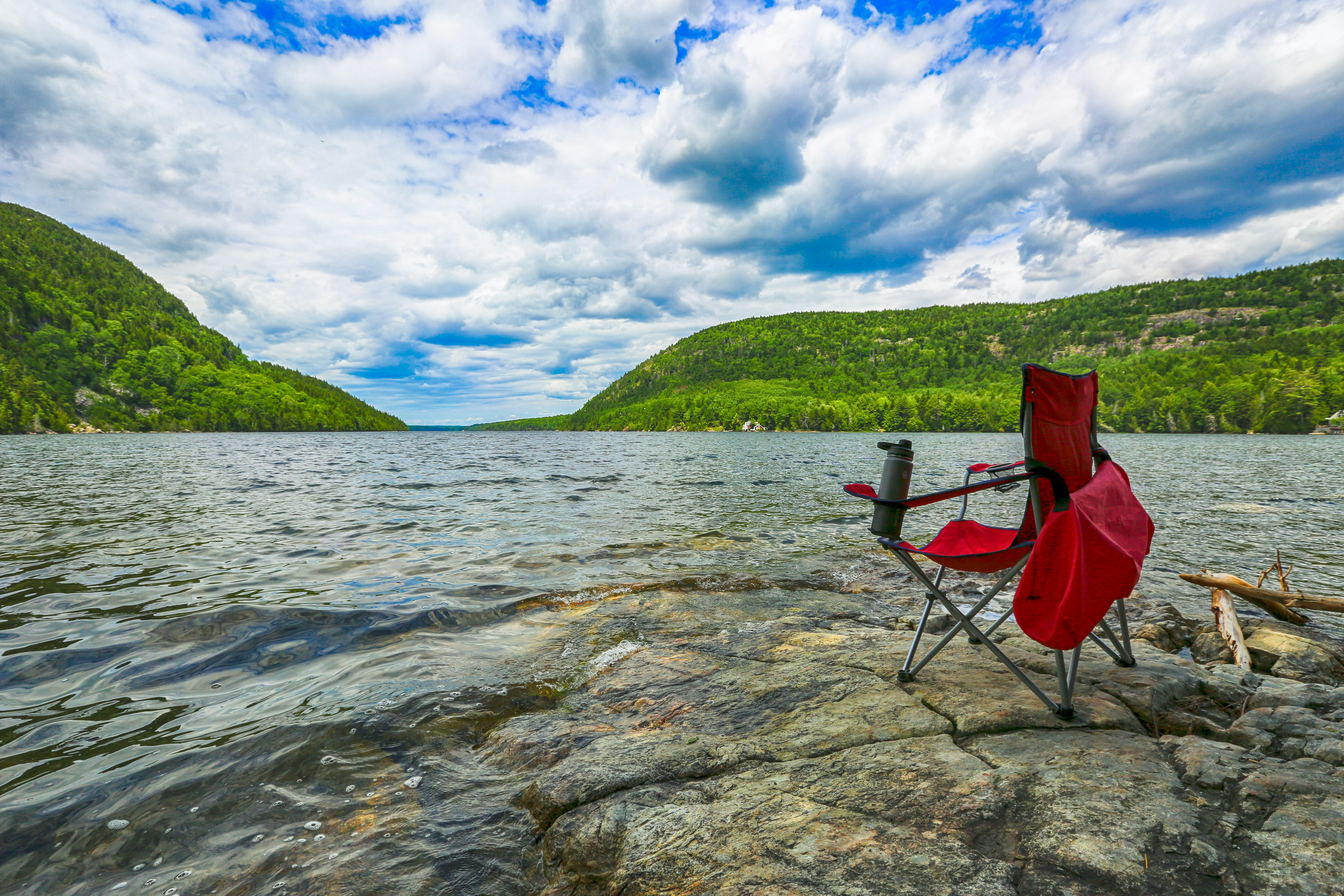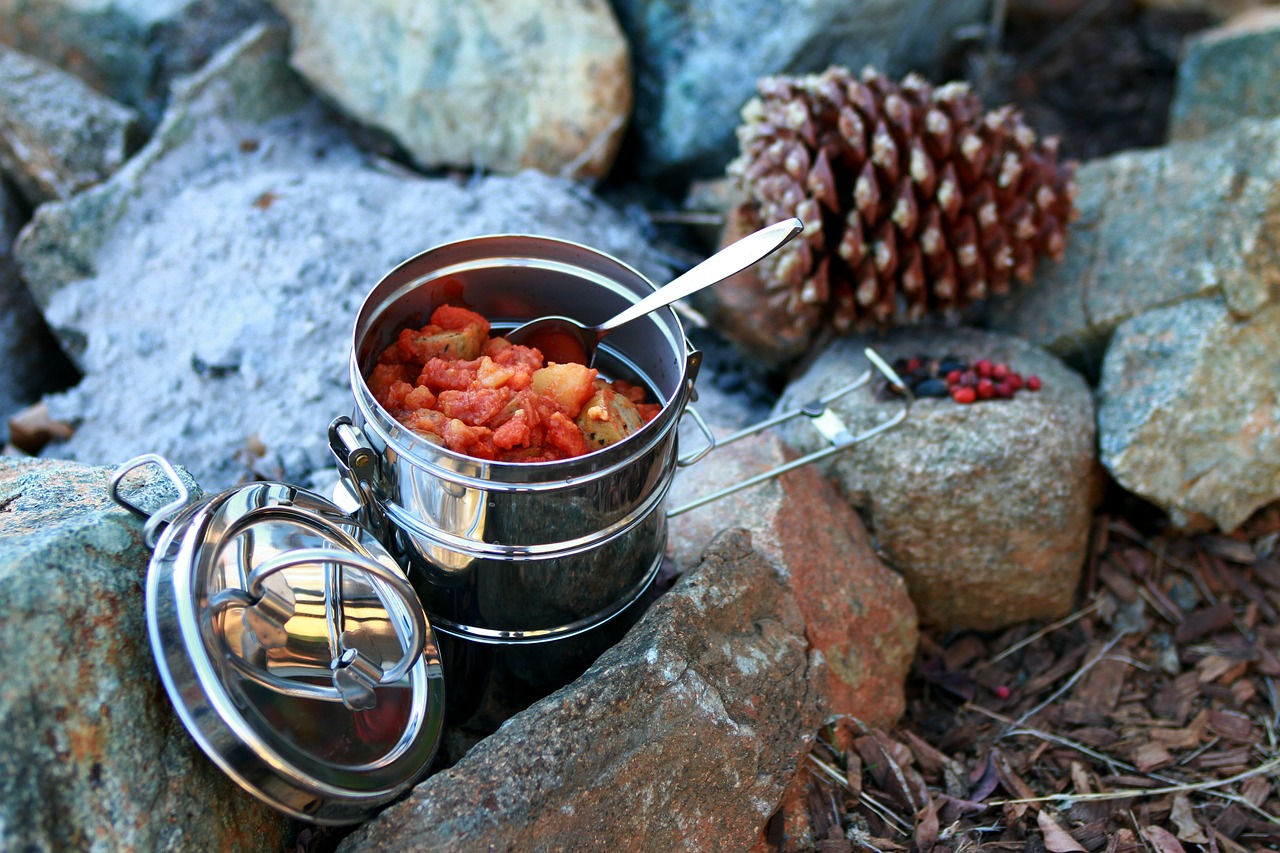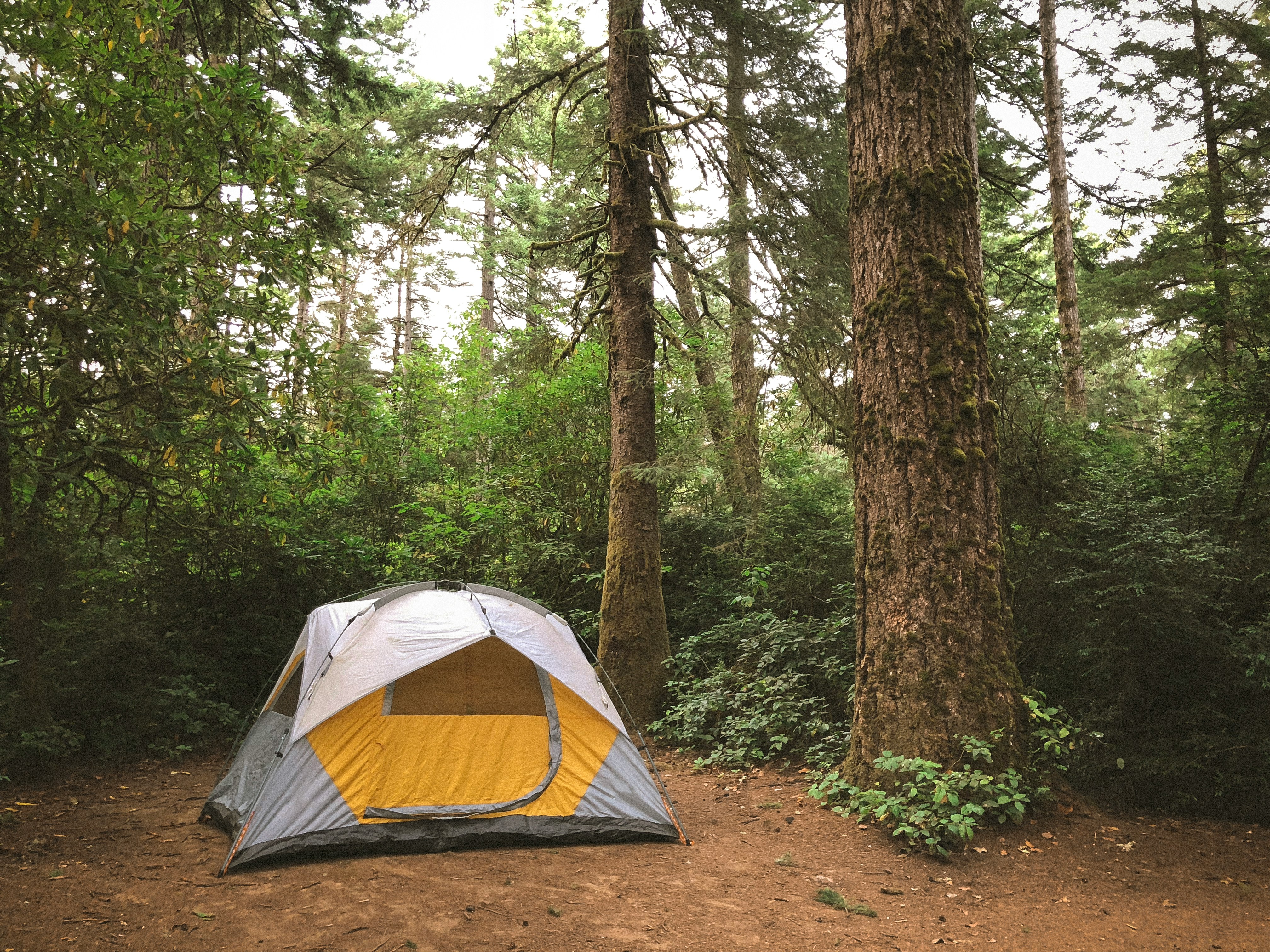Introduction to Camping Skills
Camping is an exhilarating outdoor adventure that allows you to immerse yourself in nature and escape the hustle and bustle of everyday life. It offers a chance to disconnect from technology, breathe in fresh air, and explore the beauty of the wilderness. However, to ensure a safe and enjoyable camping experience, it's essential to master a few fundamental skills. In this comprehensive guide, we'll delve into the art of fire building, pitching a tent, and navigation – three crucial elements that will elevate your camping game.
The Importance of Camping Skills
Mastering camping skills not only enhances your outdoor experience but also ensures your safety and preparedness in the great outdoors. When you venture into the wilderness, you leave behind the comforts and conveniences of modern life. Being self-sufficient and equipped with the right knowledge and abilities becomes paramount.
Safety and Survival
Possessing essential camping skills can make a significant difference in emergency situations. Knowing how to build a fire, for example, can provide warmth, light, and a means to cook food or purify water. Setting up a sturdy shelter offers protection from the elements and ensures a comfortable night's sleep. Navigation skills help you find your way back to camp or reach help if needed.
Confidence and Independence
When you have a solid foundation of camping skills, you gain confidence in your ability to handle challenges and overcome obstacles. You feel more self-reliant and capable of adapting to different situations. This sense of independence allows you to fully immerse yourself in the camping experience and enjoy the freedom that comes with it.
Appreciation for Nature
As you develop your camping skills, you also cultivate a deeper appreciation for nature. Building a fire from scratch or navigating using natural landmarks connects you more intimately with your surroundings. You begin to understand the intricacies of the ecosystem and develop a greater respect for the environment.
In the following sections, we will explore each of these essential camping skills in detail. From the basics of fire building to the techniques of pitching a tent and the fundamentals of navigation, this guide will equip you with the knowledge and confidence to embark on unforgettable camping adventures. So, let's dive in and uncover the secrets to becoming a skilled camper!
Fire Building Techniques
Few things are as essential and satisfying as a well-built campfire. It provides warmth, light, and a cosy ambiance that adds to the camping experience. However, building a fire is more than just striking a match – it's an art form that requires knowledge and practice.
Gathering Tinder, Kindling, and Fuel
The first step in building a successful fire is gathering the right materials. Tinder, kindling, and fuel are the three essential components you'll need.
Tinder
Tinder is the material that ignites first and helps start the fire. Ideal tinders include:
- Dry grass
- Leaves
- Dryer lint
- Cotton balls
- Commercial fire starters
Kindling
Kindling is the next step up from tinder and consists of small, dry sticks or twigs that catch fire easily and help build the fire's intensity.
Fuel
Fuel is the larger pieces of wood that sustain the fire once it's established. Look for dry, seasoned logs or branches that will burn steadily and provide long-lasting heat.
Fire-Building Techniques
Once you've gathered your materials, it's time to choose a fire-building technique. Here are some popular methods:
Teepee Fire
The teepee fire is a classic and straightforward method.
- Start by creating a small nest of tinder in the center of your fire pit.
- Arrange kindling over the tinder in a teepee shape, leaving an opening for air flow.
- Add larger pieces of fuel around the teepee structure.
Log Cabin Fire
The log cabin fire is another popular technique that provides a stable and long-lasting fire.
- Start with a small tinder bundle in the center.
- Arrange kindling in a square or rectangular shape around the tinder.
- Continue building layers of kindling in a log cabin pattern, alternating the direction of each layer.
- Add larger fuel logs on top.
Upside-Down Fire
The upside-down fire is a low-maintenance method that burns from the top down.
- Place your largest fuel logs on the bottom.
- Add progressively smaller pieces of wood on top.
- Finish with a layer of tinder on the very top.
- This method ensures a long-burning fire with minimal tending.
Fire Safety and Maintenance
Building a fire is only half the battle – maintaining it safely is equally important.
- Always have a water source or fire extinguisher nearby.
- Never leave a fire unattended.
- When it's time to extinguish the fire, douse it thoroughly with water and stir the ashes to ensure it's completely out.
- Follow local fire regulations and check for any fire bans or restrictions in your camping area.
By mastering these fire-building techniques and practicing responsible fire management, you'll be able to enjoy the warmth and ambiance of a well-built campfire on your camping adventures.
Pitching a Tent
A well-pitched tent is your home away from home in the great outdoors. It provides shelter, protection, and a comfortable space to rest after a day of adventure. However, setting up a tent can be a daunting task for beginners, but with the right techniques, it can become a breeze.
Choosing the Right Tent
Before you can pitch a tent, you need to choose the right one for your camping needs. Consider the following factors:
- Number of people it will accommodate
- Weather conditions you'll be facing
- Weight and packability of the tent
- Seasonality (3-season or 4-season tent)
- Tent style (dome, cabin, backpacking, etc.)
Site Selection
Selecting the right campsite is crucial for a comfortable and safe camping experience.
- Look for a level, well-drained area free from rocks, roots, and other debris that could damage your tent floor.
- Avoid pitching your tent near dead trees or branches that could fall during strong winds.
- Consider proximity to water sources, but maintain a safe distance to prevent flooding.
- Choose a site with some natural wind protection, such as trees or boulders.
Tent Setup
Once you've chosen your campsite, it's time to set up your tent. Follow these steps for a successful tent pitch:
1. Lay Out the Tent
Spread out the tent and its components on the ground.
Ensure all parts are accounted for, including the tent body, rainfly, poles, stakes, and guylines.
2. Stake Out the Corners
Use tent stakes or rocks to secure the corners of the tent to the ground.
Create a stable base by ensuring the tent floor is taut and level.
3. Assemble the Poles
Most tents come with color-coded or numbered poles for easy assembly.
Follow the manufacturer's instructions to connect the poles correctly.
4. Insert the Poles
Carefully feed the assembled poles through the tent's sleeves or clips.
Ensure the poles are fully inserted and the tent takes shape.
5. Stake Out the Guylines
If your tent has guylines, stake them out at an angle.
Guylines provide additional stability and prevent the tent from collapsing in strong winds.
6. Secure the Rainfly
If your tent has a separate rainfly, attach it according to the manufacturer's instructions.
Ensure proper ventilation and water protection by adjusting the rainfly's tension and position.
Tent Maintenance and Care
Proper tent maintenance is essential for prolonging its lifespan and ensuring it remains in good condition for future camping trips.
- After each use, thoroughly clean and dry your tent before storing it in a cool, dry place.
- Inspect the tent for any damage or wear and tear, such as tears, broken zippers, or bent poles.
- Make necessary repairs or replacements as needed to maintain the tent's integrity.
- Store the tent loosely in a breathable bag to prevent mold and mildew growth.
By selecting the right tent, choosing an appropriate campsite, following the setup steps, and practicing proper maintenance, you'll ensure a comfortable and enjoyable camping experience with a well-pitched tent as your outdoor sanctuary.
Navigation Skills
Navigating in the great outdoors is a crucial skill for any camper or hiker. Whether you're exploring a new trail or venturing off the beaten path, knowing how to read a map and use a compass can help you stay on course and avoid getting lost.
Map Reading
Maps are essential tools for navigation, providing a visual representation of the terrain, landmarks, and trails in a given area. Here are some tips for reading maps effectively:
Understanding Map Symbols and Legends
Maps use a variety of symbols and colors to represent different features, such as trails, roads, water sources, and elevation contours.
Familiarise yourself with the map's legend to understand what each symbol represents.
Identifying Terrain Features
Maps can help you identify terrain features like mountains, valleys, and ridges, which can aid in navigation and route planning.
Pay attention to contour lines, which represent changes in elevation, and use them to visualise the terrain.
Estimating Distances and Travel Times
Most maps include a scale, which allows you to estimate distances between points.
Combine this information with your hiking pace and the terrain difficulty to estimate travel times and plan your route accordingly.
Using a Compass
A compass is an invaluable tool for navigation, especially when combined with a map. Here's how to use a compass effectively:
Understanding Compass Basics
A compass has a magnetised needle that aligns with the Earth's magnetic field, pointing to magnetic north.
The compass housing is marked with cardinal directions (N, S, E, W) and degree markings.
Taking Bearings
To take a bearing, hold the compass flat and rotate the housing until the "N" on the housing lines up with the red end of the needle (magnetic north).
The degree marking at the end of the orientation arrow is your bearing.
Following a Bearing
Once you have a bearing, use the compass to follow that direction.
Pick a landmark in the distance along your bearing and walk towards it, periodically checking your compass to ensure you're still on course.
Triangulation
Triangulation is a technique used to pinpoint your location on a map by taking bearings to two or more known landmarks and drawing lines from those landmarks on the map.
The intersection of those lines is your approximate location.
GPS and Digital Navigation
While traditional map and compass skills are essential, modern technology has introduced new navigation tools like GPS devices and smartphone apps. These can be useful supplements but should never replace the knowledge and skills required for map and compass navigation.
- GPS devices use satellite signals to determine your location and provide real-time navigation guidance.
- Smartphone apps like Google Maps, AllTrails, and Gaia GPS offer digital maps and GPS functionality.
- Always carry a physical map and compass as a backup, as electronic devices can fail or run out of battery.
By mastering map reading, compass use, and understanding the role of digital navigation tools, you'll be well-equipped to navigate confidently during your camping and hiking adventures. Remember to always plan ahead, study your maps, and practice your navigation skills before venturing into unfamiliar terrain.
Camping Gear Essentials
Proper gear is the foundation of a successful and comfortable camping trip. From shelter and sleeping systems to cooking equipment and personal items, having the right gear can make all the difference.
Shelter and Sleeping Systems
Tent: Choose a tent that suits the number of campers, weather conditions, and terrain you'll be camping in.
Sleeping Bag: Select a sleeping bag rated for the expected temperatures and conditions.
Sleeping Mat: A sleeping mat provides insulation and cushioning for a comfortable night's sleep.
Tarp or Footprint: A tarp or footprint can protect the bottom of your tent and provide additional shelter.
Cooking and Hydration
Camping Stove and Fuel: A compact camping stove and fuel allow you to cook hot meals and boil water.
Cookset and Utensils: A lightweight cookset and utensils are essential for preparing and eating meals.
Water Bottles or Hydration Bladder: Staying hydrated is crucial, so bring enough water in a reusable water bottle, or a means to purify water from natural sources.
Food and Snacks: Pack enough non-perishable, high-energy foods and snacks for the duration of your trip.
Personal Gear
Backpack: Choose a backpack with enough capacity and support for your gear and the length of your trip.
Headtorch or Flashlight: A reliable light source is essential for navigating and performing tasks in the dark.
First Aid Kit: A well-stocked first aid kit can help you handle minor injuries and emergencies.
Multi-Tool or Knife: A multi-tool or knife can assist with various camping tasks, such as preparing food or making repairs.
Sunscreen and Insect Repellent: Protect yourself from the sun's harmful rays and pesky insects.
Clothing and Footwear: Pack appropriate clothing and footwear for the expected weather conditions and activities.
Optional Gear
Camp Chairs: Portable camp chairs provide comfortable seating around the campfire or at your campsite.
Camp Shower: A camp shower can help you stay fresh and clean during extended camping trips.
Camp Games or Entertainment: Bring along games, books, or other entertainment for downtime at the campsite.
Remember, the gear you bring should be tailored to your specific camping trip and the activities you plan to engage in. Always prioritise safety, comfort, and practicality when selecting your camping gear.
Camping Food and Meal Planning
Proper meal planning and food preparation are essential for a successful camping trip. Not only do you need to ensure you have enough sustenance to fuel your adventures, but you also want to enjoy delicious and satisfying meals in the great outdoors.
Meal Planning
Before your camping trip, take the time to plan your meals and snacks. Consider the following factors:
Number of Days: Determine how many meals and snacks you'll need for the duration of your trip.
Activity Level: Factor in your expected activity level to ensure you have enough calories and nutrients to sustain your energy.
Dietary Restrictions: Accommodate any dietary restrictions or preferences within your group.
Cooking Methods: Plan meals that can be easily prepared with your camping cooking equipment.
Perishability: Choose non-perishable or easy-to-preserve foods to minimise spoilage.
Food Storage and Preparation
Proper food storage and preparation are crucial for maintaining food safety and preventing unwanted encounters with wildlife.
Food Storage
- Use airtight, waterproof containers or bags to store your food.
- Keep perishable foods chilled in a cooler with ice or frozen gel packs.
- Hang food bags or use bear-proof canisters in areas with active wildlife.
- Practice good hygiene and cleanliness when handling and preparing food.
Cooking and Cleanup
- Set up a designated cooking area away from your tent and sleeping areas.
- Use a camp stove or fire pit for cooking, and follow proper fire safety guidelines.
- Bring biodegradable soap and a dishpan for washing dishes and utensils.
- Properly dispose of food waste and wastewater away from your campsite and water sources.
Camping Meal Ideas
Camping meals can be simple yet delicious. Here are some ideas to get you started:
Dehydrated or freeze-dried meals: Lightweight and easy to prepare, just add hot water.
One-pot meals: Hearty stews, chilis, or pasta dishes cooked in a single pot.
Foil packet meals: Vegetables, proteins, and seasonings wrapped in foil and cooked over the campfire.
Campfire classics: Hot dogs, s'mores, and other campfire favorites.
Trail mix and energy bars: Convenient snacks for hiking and outdoor activities.
Remember, proper meal planning and food preparation can make or break your camping experience. Take the time to plan ahead and enjoy delicious, nourishing meals in the great outdoors.
Camping Etiquette and Leave No Trace Principles
Camping is not just about enjoying the great outdoors; it's also about respecting and preserving the natural environment for future generations. Practicing proper camping etiquette and adhering to Leave No Trace principles is essential for minimising your impact on the environment and ensuring a positive experience for all.
Camping Etiquette
Camping etiquette encompasses a set of guidelines and best practices that promote respect for fellow campers, the environment, and the overall camping experience.
Respecting Others
When camping, it's important to keep noise levels down, especially during quiet hours (typically from dusk to dawn). Respect other campers' privacy and personal space, and follow campground rules and regulations. Be mindful of your language and behavior, as camping often involves families and children.
Respecting the Environment
To minimise your impact on the environment, stay on designated trails and campsites to prevent erosion and damage to vegetation. Properly dispose of all rubbish and waste, including food scraps and gray water. Minimise the use of soap and other chemicals near water sources, and respect wildlife by keeping a safe distance and not feeding or disturbing animals.
Leave No Trace Principles
The Leave No Trace principles are a set of guidelines developed by the Leave No Trace Center for Outdoor Ethics to promote responsible outdoor recreation and minimise human impact on natural areas.
Plan Ahead and Prepare
Research and plan your camping trip in advance, including obtaining necessary permits and understanding regulations. Pack appropriate gear and supplies to minimise the need for improvisation in the outdoors.
Travel and Camp on Durable Surfaces
Use established campsites, trails, and durable surfaces whenever possible to prevent damage to vegetation and soil. Disperse use in popular areas to prevent the creation of new trails or campsites.
Dispose of Waste Properly
Pack out all rubbish, leftover food, and litter. Properly dispose of human waste by burying it in catholes or using designated facilities.
Leave What You Find
Avoid disturbing or removing natural objects, such as rocks, plants, or cultural artifacts. Observe wildlife from a distance and avoid feeding or approaching them.
Minimise Campfire Impacts
Use a camp stove for cooking whenever possible to reduce the need for campfires. If a campfire is necessary, use established fire rings and keep fires small. Properly extinguish and cool all campfires before leaving the area.
Respect Wildlife
Observe wildlife from a distance and avoid disturbing their natural behaviors. Store food and trash securely to prevent attracting wildlife to your campsite.
Be Considerate of Other Visitors
Respect the rights and experiences of other campers and outdoor enthusiasts. Yield to others on the trail and keep noise levels down.
By following these principles and practicing responsible camping etiquette, you can help preserve the natural beauty and integrity of the great outdoors for generations to come. Remember, the key to being a responsible camper is to minimise your impact, respect others, and leave the environment as you found it, if not better.
Camping Safety and Emergency Preparedness
While camping can be an incredibly rewarding and enjoyable experience, it's essential to prioritise safety and be prepared for emergencies. From unexpected weather changes to injuries or getting lost, being proactive and having the right knowledge and gear can make all the difference.
Weather Preparedness
Unpredictable weather conditions can quickly turn a camping trip into a challenging or even dangerous situation. To stay prepared, check weather forecasts and alerts before and during your trip. Pack appropriate clothing and gear for the expected weather conditions, including rain gear, warm layers, and sun protection. Be aware of potential hazards like thunderstorms, high winds, or extreme temperatures, and have a plan for seeking shelter or evacuating if necessary. It's also important to know the signs of hypothermia and heat-related illnesses and take appropriate precautions.
First Aid and Emergency Preparedness
Even with the best planning, accidents and emergencies can still occur. Being prepared with the right first aid knowledge and supplies can help you handle minor injuries or potentially life-threatening situations.
A well-stocked first aid kit should include bandages and gauze pads, antiseptic wipes or ointment, adhesive tape, scissors and tweezers, over-the-counter medications (pain relievers, antihistamines, etc.), an emergency blanket, a whistle, and a signal mirror.
In addition to having a first aid kit, it's crucial to learn basic first aid and wilderness survival skills before your trip. Pack a reliable communication device (satellite phone, personal locator beacon, or two-way radio) in case of emergencies, and share your camping itinerary and expected return date with a trusted friend or family member. Know how to build an emergency shelter and signal for help if needed, and familiarise yourself with the local emergency services and their contact information.
Wildlife Safety
Encountering wildlife is often a highlight of camping, but it's important to maintain a safe distance and respect their natural behaviors. To stay safe around wildlife, store food and rubbish securely to avoid attracting bears, rodents, or other animals to your campsite. Keep a clean and organised campsite to minimise potential conflicts with wildlife, and avoid approaching or feeding wild animals, as this can lead to aggressive behavior or dependency on human food sources. Learn about the local wildlife and their behaviors, and know what to do in case of an encounter. When hiking, make noise to avoid surprising animals on the trail.
Fire Safety
Campfires are a beloved part of the camping experience, but they also pose a significant risk if not handled properly. Before building a campfire, check for local fire restrictions or bans. Choose a designated fire pit or clear a safe area for your campfire, away from overhanging branches or dry vegetation. Keep a water source or fire extinguisher nearby at all times, and never leave a campfire unattended. Fully extinguish the campfire before going to sleep or leaving the area, and avoid building campfires during high wind conditions or periods of extreme drought.
By prioritising safety and being prepared for emergencies, you can enjoy your camping adventures with peace of mind and minimise the risks associated with outdoor activities. Remember, prevention and preparedness are key to ensuring a safe and enjoyable camping experience. Take the time to educate yourself, pack the necessary gear, and stay alert to your surroundings to make the most of your time in nature.
Related Articles

Let us know you agree to cookies
We use marketing, analytical and functional cookies as well as similar technologies to give you the best experience. Third parties, including social media platforms, often place tracking cookies on our site to show you personalised adverts outside of our website.
We store your cookie preferences for two years and you can edit your preferences via ‘manage cookies’ or through the cookie policy at the bottom of every page. For more information, please see our cookie policy.
